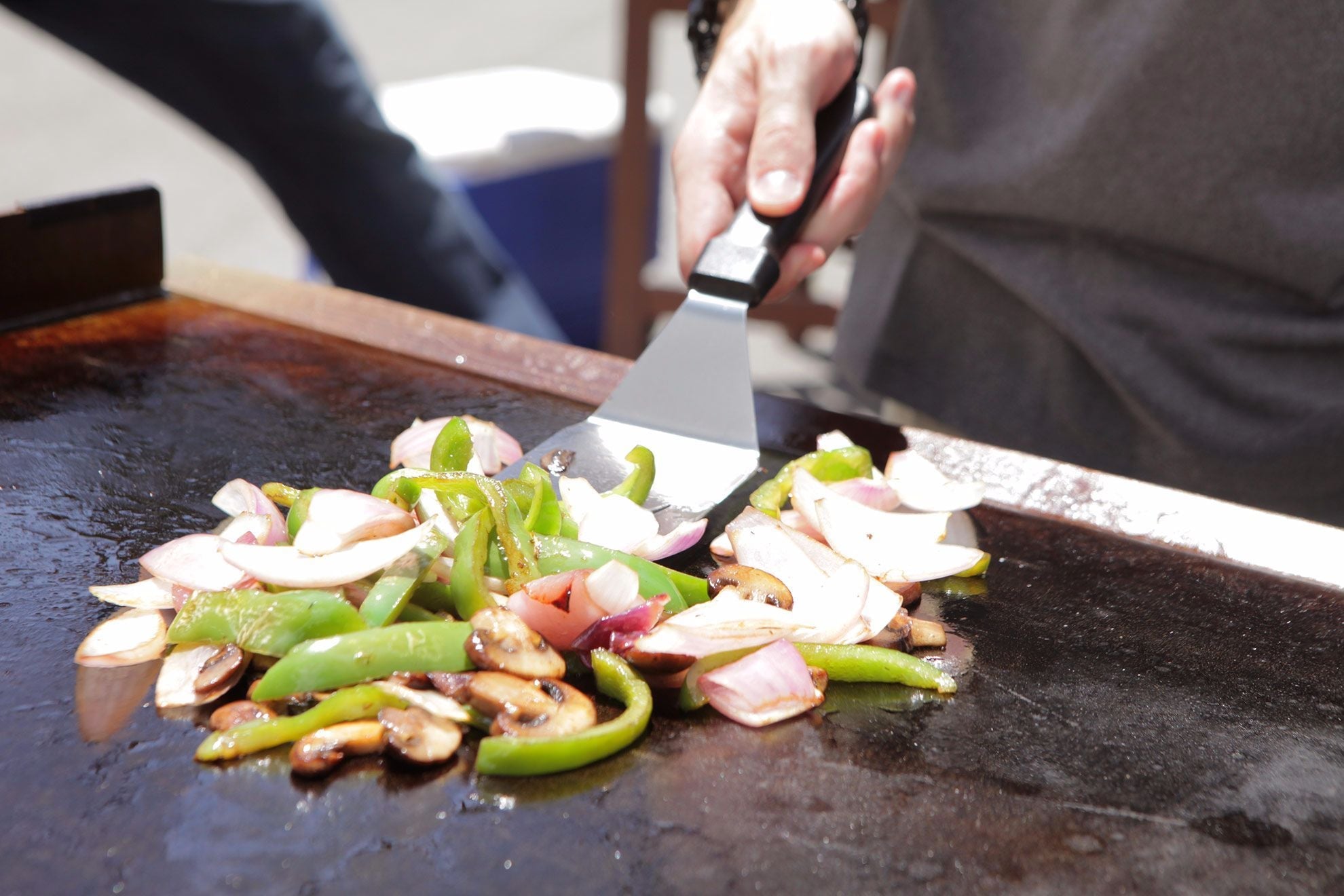How to Season a Griddle for the First Time: Step-by-Step Guide
Written By James Morgan
Welcome to the world of griddle cooking! For barbecue enthusiasts, a well-seasoned griddle can be the cornerstone of successful outdoor cooking. This guide will teach you how to season a griddle for the first time, ensuring it remains non-stick and rust-free, offering you the best cooking experience.

Why Seasoning Your Griddle is Essential
Before diving into the step-by-step process, it's crucial to understand why seasoning your griddle is so important. Seasoning creates a non-stick surface, making it easier to cook and clean. Additionally, it protects your griddle from rust, extending its lifespan.
For more insights, you can read our guide on how a griddle is preheated which is fundamental before starting the seasoning process.

Essential Tools and Supplies
Before you begin seasoning your griddle, gather the following supplies:
- High-temperature oil (e.g., canola, grapeseed, or flaxseed oil)
- Paper towels or a clean cloth
- Soap and water for initial cleaning
- Heat source (e.g., stove or outdoor grill)

Step-by-Step Guide to Seasoning Your Griddle
Step 1: Clean the Griddle
Even if your griddle is brand new, its essential to give it a good cleaning with soap and water to remove any manufacturing residues. Dry it thoroughly before you begin the seasoning process.
Step 2: Preheat the Griddle
Preheat your griddle on medium heat until it changes color. This ensures it's hot enough to begin the seasoning process.
Read more about the importance of properly preheating your griddle.
Step 3: Apply the Oil
Pour a small amount of high-temperature oil onto the griddle surface. Use a paper towel or cloth to spread the oil evenly across the entire surface, including the sides. Be cautious as the griddle is hot.
Step 4: Heat the Oil
Continue to heat the griddle until the oil begins to smoke. This process helps the oil bond to the griddle, creating a non-stick surface.
Step 5: Repeat the Process
For optimal seasoning, it's recommended to repeat steps 3 and 4 at least three times. Each layer of oil will build up the protective, non-stick coating.

Maintenance Tips for Your Seasoned Griddle
Keep It Rust-Free
Always ensure your griddle is thoroughly dried after each use. Storing it in a dry place significantly reduces the risk of rust.
Re-Season Periodically
With regular use, the seasoning on your griddle may start to wear off. When you notice food sticking more than usual, it's time to re-season your griddle.
For more tips, check out our article on how to remove rust from a griddle.
Common Mistakes to Avoid
Using Low-Temperature Oils
Using oils with low smoke points, such as olive oil, can result in a sticky residue. Always opt for high-temperature oils like canola or grapeseed.
Skipping the Preheat
Never skip the preheat step. Preheating ensures the oil bonds appropriately to the griddle's surface, creating a robust non-stick coating.
To learn more about managing cooking temperatures, visit our guide on appropriate cooking temperatures.
FAQs
How often should I season my griddle?
Season your griddle when food starts to stick, or the surface appears dull. Regular seasoning helps maintain a non-stick surface and prevents rust.
Can I use vegetable oil to season my griddle?
While you can use vegetable oil, it's better to opt for oils with higher smoke points like canola or grapeseed oil for a more effective seasoning.
Is it okay to use soap on my seasoned griddle?
After the initial clean, avoid using soap on a seasoned griddle as it can strip away the non-stick surface. Instead, use hot water and a scrub brush to clean it.
For more detailed instructions, you can also visit this website on griddle usage.
As an Amazon Associate, I earn from qualifying purchases.
As an Amazon Associate, I earn from qualifying purchases.



